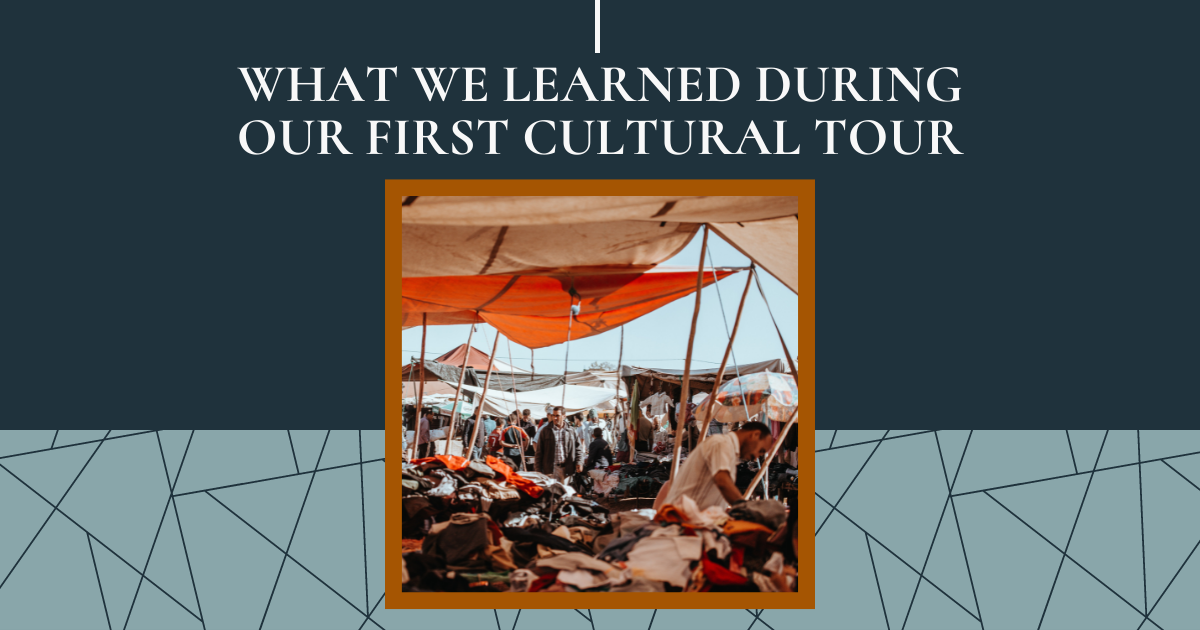Culture 201: Hot and Cold-Climate Cultures
In her book on culture, Sarah Lanier describes the story of a trip through the Sinai Desert. One of the participants in the tour asked the guide why the Bedouin Arabs wore so many clothes—what the traveler saw didn’t make any sense to him based on his assumptions about life in the heat of the desert. The guide responded, “The robes allow air flow, which cools them. The sleeves cover their entire arms, keeping them from dehydrating from too much moisture coming off the skin. The headdress is loose, allowing air to circulate around the neck, cooling them. Their clothing is white, reflecting the sun. Wisely, they sleep during the hottest part of the day. And besides, they’ve been here a few thousand years, so don’t you think they would have come up with the best ways to survive this desert?” When people observe cultures that are different from their own, they naturally assume that what they know and believe has to be the right way, the best way. This is called ethnocentrism. But we have found that we benefit from learning about other cultures, and growing our own perspectives so that we can connect with others. But beginning to learn about cultures can be a daunting task.
There are numerous ways to classify different cultures. We know that generalizations can be harmful, but with a subject as broad as culture, it is helpful to have a starting point for how to understand cultures different from our own. The goal of understanding cultures is to embrace cross-cultural relationships, rather than avoid them. If understanding culture in general terms helps us to move toward other people with mutual respect, empathy, and a desire to learn more, than it is worth it! One helpful starting point we have found is outlined in the book Foreign to Familiar by Sarah Lanier. She points out from the beginning of the book that traveling has become relatively easy, but connecting in friendship across cultures is difficult. The framework she explains designates two types of cultures: hot climate and cold-climate cultures, along with seven characteristics of a culture. In this article, we will briefly look at these characteristics of hot and cold climate cultures.
Even though the terminology we are using refers to a culture’s temperature, it is helpful to remember that there is not always a perfect correlation between the type of culture and the weather/climate of a place. For Lanier, cold-climate countries include Canada, the northern states of the United States, Northern Europe, the Jewish population of Israel, and the white populations of countries that were settled by Europeans, including New Zealand, Australia, Brazil, Argentina, and South Africa. Hot-climate cultures include Asia, the Pacific Islands, South America, Africa, the Mediterranean countries, Western Asia, the southern states of United States, and most of the rest of the world. If you are reading this as someone from a cold-climate culture, you may realize from these two lists that most of the population of the world may not be like you! Now let’s dig in to some of these cultural differences.
Hot-climate cultures tend to be relationship based, utilize indirect communication, have a strong group identity, seek inclusion, have a long history, and are described as high-context. In warm cultures, relationship is the basis of everything, even in professional settings. Relationships as the most important value impacts many other aspects of the culture. Time on the clock is not as important as the face sitting in front of me. Maintaining the friendliness between us is more important than just speaking truthfully. This may mean that no one is willing to comment on my bad haircut. Or I remember asking for directions in a small town in Peru only to be sent in a different direction by every person I asked. My American culture would insist that anything less then giving exact directions or admitting, “I don’t know” is akin to lying. But in many warm cultures, being helpful and friendly is the correct response, and one needs to avoid offense at all costs. The relationship orientation extends to a strong group identity, whether as part of a family, community, tribe, or nation. The will of the group is more important than one’s own desire, and group harmony is highly prized.
On the other hand, cold-climate cultures are more task-oriented than relationship-oriented. In cold cultures, efficiency is the ruling value, communication is direct, the individual and privacy are important, and the cultures tend to have a shorter history and be low-context. These cultural characteristics are observed easily through how people think about time, scheduling, and punctuality. “Time is money” say the cold cultures of the world, and people show that they value others by valuing their time. Planning can happen not just weeks in advance, but months and years, which is laughable in the warm cultures of the world. Much more could be said about the characteristics of warm and cold cultures, but we will save it for another time!
As we continue in our cultural exploration and learning an important part of the journey involves suspending judgement. When we want to learn about a culture that is new to us, we begin by just listening and observing, adopting the posture of a learner. When visiting a new country, we may naturally adopt the posture of judging and wanting to point out what people are doing wrong, because we make comparisons between what we know, and anything different we consider “wrong.” But we must remember the story of the visitor in the desert; the people who have been living in the desert for thousands of years probably know more about how to survive in the desert than outside visitors. Maybe people from the other culture have something to teach us that could impact how we see our own culture, as well as the world, if only we are willing to listen and learn.
Do you work in a multicultural team or context? Are you traveling to a country with a culture different than your passport country? Do you need an outside perspective to help you make sense of the cultural misunderstandings you face? We can help you learn to navigate the cultural differences you face in your context.















Morocco is a very unique country for several reasons. The first is its strategic location in the northwest of the continent of Africa, just 14 kilometers south of Europe. This beautiful country is bordered by the Mediterranean Sea in the North, the Atlantic Ocean in the West, Algeria to the East, and Mauritania to the South. For this reason, Morocco is a crossroads where cultures, civilizations, and ethnicities meet.